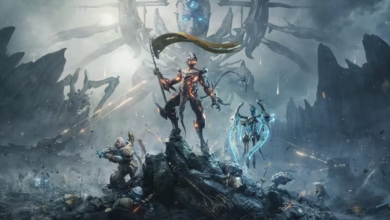Assembly: The Brutal, Beautiful Path to Better AI

▼ Summary
– Chris Sawyer single-handedly developed RollerCoaster Tycoon in 1999 using assembly language, a low-level programming language that directly corresponds to machine code.
– Assembly language was chosen for its efficiency, as high-level programming tools in the 1990s had slow compilers and poor debuggers.
– Sawyer’s primary motivation was passion, having previously created Transport Tycoon in assembly, which allowed him to push hardware to its limits.
– Working in assembly requires precise, direct commands, offering no abstractions and demanding exactness from the programmer.
– Despite its difficulty, assembly provides a unique level of control and beauty, contrasting with modern high-level languages that simplify coding.
Looking back at the 1999 release of Rollercoaster Tycoon, the game stood out not for flashy graphics but for something far more remarkable under the hood. Its creator, Chris Sawyer, built the entire experience using assembly language, an approach almost unheard of for such a complex project. This wasn’t just a technical flex, it was a masterclass in precision engineering, where every line of code spoke directly to the computer’s processor.
Programming languages typically fall into two broad categories. High-level languages like Python or C++ use syntax that feels closer to human communication, making them easier to write and understand. These instructions get translated by a compiler into the fundamental binary code, ones and zeros, that a computer’s hardware actually executes. Assembly language, by contrast, sits at the opposite end of the spectrum. It’s a low-level language with an almost direct, one-to-one relationship with the machine’s native instructions. Coding in assembly is like giving orders to the silicon itself, a painstaking process akin to constructing a cathedral toothpick by toothpick.
So what would drive a developer to choose such a difficult path? When asked, Sawyer pointed to practical reasons rooted in the technology of the era. During the 1990s, the development tools for high-level languages were often sluggish and unreliable. Compilers were slow, and debuggers were notoriously ineffective. By writing directly in x86 assembly, the native language for Intel processors, Sawyer could bypass these limitations and achieve a level of performance and control that other tools couldn’t match.
Yet efficiency alone doesn’t fully explain the dedication. The deeper motivation was a genuine passion for the craft. Before his theme park simulation, Sawyer created Transport Tycoon, another complex game written entirely in assembly. This title tasked players with managing intricate transportation networks. One can picture Sawyer as a meticulous model railroader, personally laying every digital piece of track with deliberate care. He had to understand the hardware’s absolute limits to bring his carefully designed pixels to life on the screen. As he explained, Rollercoaster Tycoon only became possible because he was intimately familiar with the boundaries of what the machine could do.
This concept of working within strict constraints feels almost alien today. We live in an age of digital plenty, where a single command in a modern AI training routine can mobilize a global network of a million graphics processors. Assembly offers no such luxuries. It gives you precisely what you request, nothing more, nothing less. Countless programmers have learned through frustrating experience that this includes any mistakes they might make. The language is both brutally unforgiving and strikingly elegant, demanding that you articulate your intentions with perfect clarity.
It would be a mistake, however, to think assembly’s inventors were masochists. They designed it to make life easier, not harder. They were likely tired of the tedious, physical process of feeding punchcards into room-sized computers and manually flipping switches on those behemoths. Perhaps they envisioned a future like our own, where machines accomplish incredible feats from simple instructions. Their creation was a stepping stone toward that reality, a tool that bridged the gap between human thought and machine execution.
(Source: Wired)





